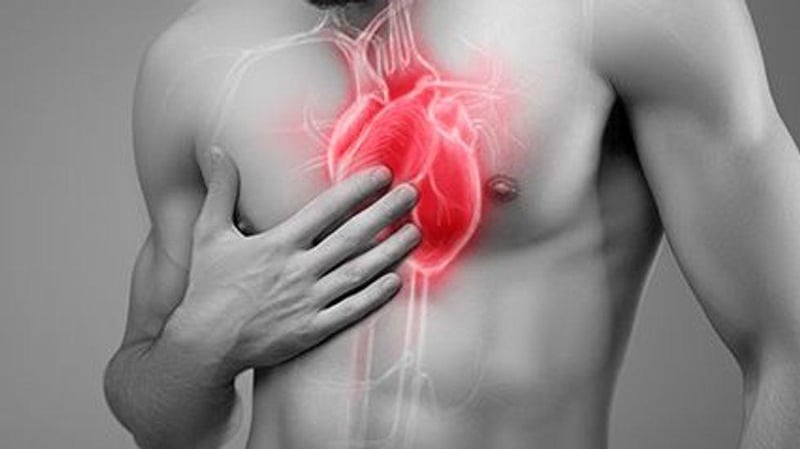(330) 876-1228
8507 Main StreetKinsman, OH 44428
(330) 876-1229

Many middle-aged adults with apparently healthy hearts have a "silent" buildup of fatty deposits in their arteries, a large, new study shows.
Researchers found that of more than 25,000 50- to 64-year-olds, about 42% had signs of atherosclerosis -- a buildup of "plaques" in the arteries that can lead to a heart attack or stroke.
That was despite the fact that none had any history of heart trouble.
Experts said the high rate of "silent" atherosclerosis was not surprising. Other, smaller studies had suggested as much.
But the new results -- from a random sample of the general population in Sweden -- confirm the condition is widespread in middle-aged people.
"It's a really important study because of the representative population," said Dr. Donald Lloyd-Jones, president of the American Heart Association. "Forty-two percent of people in this age group do indeed have some plaques in their arteries. And it's important to focus attention on that."
Fortunately, there are ways to help prevent atherosclerosis from resulting in a heart attack or stroke: Controlling high blood pressure, unhealthy cholesterol and high blood sugar, quitting smoking, and sticking with a healthy diet and regular exercise are among them, the study authors said.
"Working on these risk factors is very important in this age span," said Dr. Goran Bergstrom, the lead researcher on the study and a professor at the University of Gothenburg, in Sweden.
The findings, published online Sept. 20 in the journal Circulation, are based on nearly 25,200 Swedish adults with no history of heart attack or procedures to treat clogged heart arteries. All underwent two types of imaging tests: coronary artery calcium screening and CT angiography.
During calcium screening, a CT scan is used to detect calcium deposits in the heart arteries, because calcium is a component of plaques.
Currently, calcium screening is a standard test, Lloyd-Jones said. Doctors may use it when there's uncertainty about whether to prescribe a statin, which are cholesterol-lowering drugs that cut the risk of heart attack and stroke.
That uncertainty can arise, for example, when a patient has an "intermediate" risk of suffering a heart attack in the next 10 years -- because of factors like age and blood pressure -- but has LDL ("bad") cholesterol levels that fall short of "high."
A calcium score of zero means there is no detectable calcium in the arteries, and those people are often considered to be low-risk for a heart attack.
CT angiography, meanwhile, involves injecting a contrast dye into the blood vessels, which allows the CT scan to spot plaques.
Based on that test, Bergstrom's team found, 42% of study participants had some degree of atherosclerosis.
In general, those angiography results matched up with study participants' calcium scores: Of those with very high calcium scores, all showed evidence of atherosclerosis on CT angiography.
But even among people with calcium scores of zero, 5.5% actually had some degree of atherosclerosis based on angiography, the study found.
According to Bergstrom, the findings suggest that CT angiography offers "additional information beyond coronary artery calcium scoring."
"This study shows that [CT angiography] has the potential to change clinical practice in the future and may be a part of prevention strategies and risk management," Bergstrom said. He added, though, that more research is needed to prove that.
Lloyd-Jones saw the findings differently.
"To me, this confirms that [calcium] scoring does a spectacular job," he said.
He pointed out that under current treatment guidelines, a calcium score of zero does not automatically mean patients should skip statins. When those people either smoke or have diabetes or a strong family history of premature heart disease, statin treatment is recommended.
And in this study, people who had atherosclerosis despite a calcium score of zero tended to have more risk factors for heart trouble -- including smoking and obesity.
"I think this nicely confirms that the guidelines got it right," Lloyd-Jones said.
So at this point, he said, people concerned about their future heart attack risk should not be asking for CT angiography, which is both pricier and involves more radiation than calcium scoring.
Instead the advice is less technical. "Get with your doctor and know what your numbers are," Lloyd-Jones said, referring to measures like blood pressure, cholesterol and blood sugar.
If your doctor hasn't yet, he said, ask him or her to calculate your 10-year risk of a heart attack (a simple estimate based on your "numbers" plus factors like age and sex). In some cases, Lloyd-Jones said, a calcium screening may be recommended to clarify your risk.
From there, he said, any treatment plan, whether lifestyle changes alone or medication, has to be "individualized."
More information
The American Heart Association has advice on lifestyle and heart attack prevention.
SOURCES: Goran Bergstrom, MD, PhD, professor, senior consultant, clinical physiology, department of molecular and clinical medicine, University of Gothenburg, Sweden; Donald Lloyd-Jones, MD, ScM, president, American Heart Association, Dallas, and chair, department of preventive medicine, Northwestern University Feinberg School of Medicine, Chicago; Circulation, Sept. 21, 2021, online
